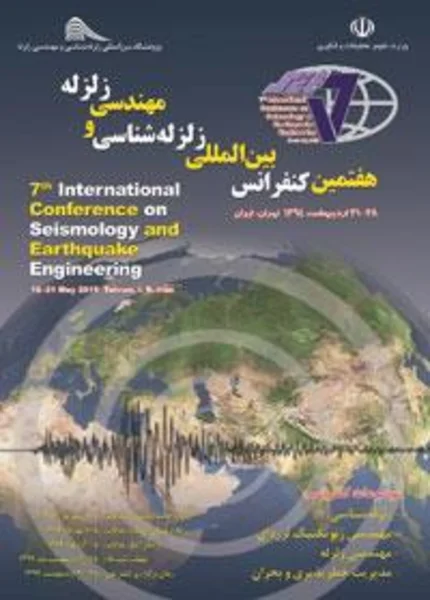-
measuring resilience and recovery
جزئیات بیشتر مقاله- تاریخ ارائه: 1394/02/01
- تاریخ انتشار در تی پی بین: 1394/02/01
- تعداد بازدید: 769
- تعداد پرسش و پاسخ ها: 0
- شماره تماس دبیرخانه رویداد: -
this paper reports attempts to measure and assess resilience and recovery after various recent earthquakes that had huge impacts in their respective countries. the examples are both quantitative and qualitative. the concept of resilience as used in disaster literature has, until recently, been imprecise (bruneau et al., 2003). this papers reports the latest thinking on what the concept means and how to measure it. it also links resilience to the speed and quality of recovery. recovery is variously referred to as recovery, reconstruction and long-term development. the research reported here makes no distinction between these. recovery may involve reinstating things to the same state they were in before the disaster or ‘building back better’. the focus of this paper is to measure the speed of recovery with reference to a ‘base state’ immediately prior to the onset of the disaster. we used satellite imagery and ground surveys to measure and compare the speed of recovery in thailand and pakistan. people were rehoused significantly faster in thailand than in pakistan. we used household surveys and key informant interviews in pakistan to measure recovery of a range of 10 indicators, including access, housing, education, health, administration, environment etc. finally, we used building control and insurance data in northridge california to suggest that insured households got rehoused on average 12 months faster than uninsured households. the paper concludes that it is possible to measure speed of recovery, but queries whether speed should be the sole measure of resilience?
مقالات جدیدترین رویدادها
-
استفاده از تحلیل اهمیت-عملکرد در ارائه الگوی مدیریت خلاقیت سازمانی و ارائه راهکار جهت بهبود
-
بررسی تاثیر ارزش وجوه نقد مازاد بر ساختار سرمایه شرکت های پذیرفته شده در بورس اوراق بهادار تهران
-
بررسی تأثیر سطح افشای ریسک بر قرارداد بدهی شرکت های پذیرفته شده در بورس اوراق بهادار تهران
-
بررسی تأثیر رتبه بندی اعتباری مبتنی بر مدل امتیاز بازار نوظهور بر نقد شوندگی سهام با تأکید بر خصوصی سازی شرکت ها
-
تأثیر آمیخته بازاریابی پوشاک ایرانی بر تصویر ذهنی مشتری پوشاک ایرانی (هاکوپیان)
-
مقایسه ی سروپروالانس هلیکوباکترپیلوری در بیماران دچار آکنه ی رزاسه با افراد سالم
-
بررسی چگونگی رشد و تولید متابولیت ها در محیط های کشت حاوی ساکاروز
-
ژئوتوریسم روستای سیوند
-
بررسی و بهبود شرایط پایداری خاکریزهای پساب کارخانه فرآوری شرکت معدنی و صنعتی گل گهر سیرجان
-
استفاده از روش برنامه ریزی خطی چند هدفه جهت افزایش سود تولید لوله های 36 و 160 میلی متر و مقدار افزایش بهینه تولید لوله پلی اتیلن 63 میلی متر در کارخانه پلی اتیلن کرمان
مقالات جدیدترین ژورنال ها
-
مدیریت و بررسی افسردگی دانش آموزان دختر مقطع متوسطه دوم در دروان کرونا در شهرستان دزفول
-
مدیریت و بررسی خرد سیاسی در اندیشه ی فردوسی در ادب ایران
-
واکاوی و مدیریت توصیفی قلمدان(جاکلیدی)ضریح در موزه آستان قدس رضوی
-
بررسی تاثیر خلاقیت، دانش و انگیزه کارکنان بر پیشنهادات نوآورانه کارکنان ( مورد مطالعه: هتل های 3 و 4 ستاره استان کرمان)
-
بررسی تاثیر کیفیت سیستم های اطلاعاتی بر تصمیم گیری موفق در شرکتهای تولیدی استان اصفهان (مورد مطالعه: مدیران شرکتهای تولیدی استان اصفهان)
-
تاثیر اجرای حسابداری الکترونیک بر افزایش سرمایه گذاری در شرکت
-
اثرسنجی جاذبه های تبلیغاتی احساسی و منطقی در نگرش نسبت به برند شرکت ( مورد مطالعه شرکت عالیس )
-
بررسی جایگاه حقوق زنان از منظر حقوق عمومی در نظام حقوقی ایران و انگلستان
-
نقش تربیت ورزشی در کاهش معضلات اجتماعی
-
comparison metacognitive beliefs and control strategies of thought and document styles among diabetes and healthy people




سوال خود را در مورد این مقاله مطرح نمایید :